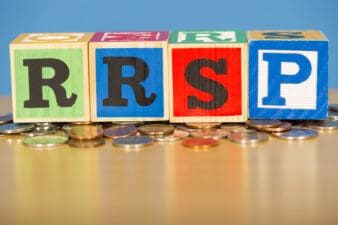Contrary to what you might think, it’s perfectly OK to not have any investments at age 30. If you’re reading this article, chances are you’re looking to get started, and that is commendable. At age 30, you still have at least a 30-year runway to invest, assuming you’re trying to retire at age 60.
Investing in a diversified portfolio of stocks over these 30 years, making consistent contributions, and staying the course can help you turn even modest sums into a six-figure retirement portfolio. That being said, figuring out which stocks are long-term, buy-and-hold stocks can be difficult.
My fellow Foolish writers have some excellent Canadian stock picks, so give those a read. My advice? Use an exchange-traded fund, or ETF, as the “core” of your investment portfolio. These ETFs offer strong diversification, low fees, and peace of mind. Let’s see how they work.
“Lazy” investing via ETFs
Imagine trying to buy a diversified portfolio of stocks. You would have to buy small, mid-, and large-cap stocks from all 11 market sectors and from every single country. You’d have to figure out how much of each to buy and in what proportions relative to each other. This already sounds exhausting!
Fortunately, beginner investors can use ETFs to construct a well-diversified, complete investment portfolio with little money. An easy way to visualize ETFs is as a basket of different stocks that trade on an exchange with their own ticker. Buying an ETF gives you exposure to all its underlying stocks.
And that’s where the “laziness” comes in. You don’t have to buy hundreds of individual stocks or do research anymore. Simply buy a few passive, broad-market index ETFs or, better yet, an all-in-one asset-allocation ETF that offers a complete stock portfolio.
Asset-allocation ETFs
I love asset allocation ETFs. Think of these as a one-size-fit-all stock portfolio that a fund manager creates and sells you shares of. These ETFs are globally diversified and often holding thousands of stocks from the U.S., Canadian, and international markets. They cover small-, mid-, and large-cap stocks and all 11 market sectors.
With an asset-allocation ETF, all you really need to do is buy and hold, reinvest dividends, and never sell. You don’t have to worry about companies going bankrupt, how the market is doing, etc. While it can swing up and down, you’re betting on thousands of stocks, which is as safe as it gets.
Best of all? The fees are low. Most asset allocation ETFs costs a management expense ratio (MER) of anywhere between 0.20% and 0.30%. For a $10,000 investment, that works out to around $20-$30 in annual fees. Compare this to the cost and headache of trading hundreds of stocks yourself.
My favourite asset-allocation ETFs are listed below. They perform pretty similarly. There might be some individual differences in holdings, but for most investors the choice can boil down to a coin flip.
- Vanguard All-Equity ETF Portfolio
- iShares Core Equity ETF Portfolio
- BMO All-Equity ETF
- Horizons Growth TRI ETF Portfolio







